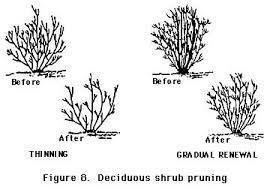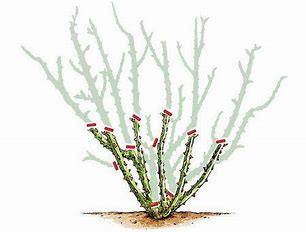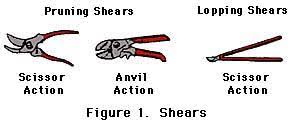Master Gardeners – Roses: Exceptional blooming Begins with Pruning
Published 12:10 am Saturday, February 12, 2022
|
Getting your Trinity Audio player ready...
|
By John Green
Certified Master Gardener
Hello gardeners! Another cold snap has now left the area and who knows, perhaps it’ll be our last, but I wouldn’t bet my plants on it. Many of you (like me) and can hardly wait to begin gardening. We have about a month to go before our last anticipated frost date (March 10th), so rather than risk planting tender plants now, it’s better to focus on the few remaining garden tasks preparing for springs’ arrival. Who knows, you may even have time for a new spring garden project!
Rose Pruning
Let me start by saying it is almost impossible to kill a rose with excessive pruning. Pruning roses is not as complicated as it may seem, though it’s important to prune at the right time for the type of roses’ you have. By following one simple rule of pruning, you can achieve professional results and have healthy plants. Rose canes need to be cut at a 45-degree angle, at least ¼ to ½” above an outward-facing bud. That’s it! The Golden rule of pruning roses. Following this rule encourages the rose to grow outward, improving air circulation and sun exposure while minimizing crossed canes.
There are many new rose varieties which don’t require much if any pruning. It is essential to use the right tools for the job, while protecting yourself from much dreaded thorns. Using the incorrect tools or improper tool hygiene can damage the rose bush and create other plant health issues.
Equipment
- A long-sleeved shirt or two for protection against thorns.
- Safety glasses or goggles for eye protection since canes don’t always go where intended.
- Sharp by-pass pruners (not anvil style-crush rather than cuts rose canes).
- Isopropyl alcohol (70% assay or greater) for disinfecting pruners and loppers.
- Rose pruning gloves or heavy-duty leather gloves
- Lopping shears to remove canes larger than ½” diameter or pruning saw.
- Container large enough to hold pruned rose canes.
* Note: pruning tools must be clean and sharp. Sterilize with alcohol between cuts and plants.
Late winter is the best time for major pruning of most rose types. So now would be a great time to step away from your hot cup of coffee, put on warm clothing, gather pruning equipment and start pruning away! A specific pruning date is not necessary, to make it easy to remember, Valentine’s Day (February 14th) is a great time to prune roses. For all roses, begin pruning by removing dead and damaged canes (they appear brown). Roses which have never been pruned before or not in many years will require a severe pruning. Cut back the previous year’s growth by ¼ to ½ or more, until healthy, white center is revealed in each cane.
Lightly pruning roses during the growing season will keep them well-groomed. Some reblooming varieties need “deadheading” to remove spent flowers encouraging more blooms throughout the growing season. Spent blooms need to be pruned back to the first five-leaflet stem to promote more growth.
Not all rose varieties develop rose hips once the flowers fade, meaning deadheading is not necessary as the rose will continue blooming without assistance. Blooms simply fall off and yet the plants will continue to bloom.
Pruning by Rose Type
Hybrid and Floribunda
These rose types need to be cleared of diseased and dead canes before they begin to “green up” and begin branching. Late winter or early spring is the time to remove crossed canes, and weak, spindly growth. Consider the variety of rose and its normal growth habit when pruning, cut back old canes by making a 45-degree angled cut to a bud that points away from the rose center. This will encourage outward growth.
Primitive (Shrub and Single Blooming)
Roses of this type tend to be the hardiest of all roses living for decades. Primitive type roses initially bloom on the previous years’ canes in the middle of summer. If the rose variety is a reblooming rose, then blooms repeat throughout the current growing season. Remove diseased, broken, or dead branches in early spring. Prune lightly and selectively after flowering to manage growth and form or shape the rose.
Climbing Roses
Climbing roses are hardy and most tend to bloom on previous years canes. Do not prune climbing roses until after peak flush of blooms is complete. Removing diseased or damaged canes is necessary but yearly pruning should wait until blooming subsides. Prune undesirable, spindly and crossed canes to maintain good air circulation and allow light to penetrate the entire roses’ habit. Shape and train new growth securing to a strong support structure such as an arbor, fence, or trellis. Side branches tend to flower more heavily than central leaders.
For more information or to have all your gardening questions answered, contact the Orange County Master Gardeners: Website: https://txmg.org/orange Facebook: Orange County Texas Master Gardeners Association Helpline: (409) 882-7010 Email: extension@co.orange.tx.us.








